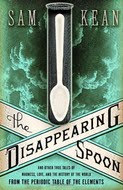Second in a series of reviews of my 10 favorite books read in 2010, presented in alphabetical order.
Packing for Mars
by Mary Roach
It seems like a previous life: the mid-1980s and NASA’s program to send the first American “civilian” into space. I was interested, then sidelined when applications were restricted to teachers, then stunned by the
Challenger launch disaster. But now I’m delighted to get a sort of ride-along with the clever and uber-curious Mary Roach in
Packing for Mars.
She begins: “To the rocket scientist, you are a problem. You are the most irritating piece of machinery he or she will ever have to deal with.” And then she dives in to explore that human machinery in space and how everything -- procedures, equipment and supplies -- is designed to best serve it.
Through examples from animal simulations and crash-test cadavers, the race-for-space/ shuttle/ space-station projects, and potential Mars-length missions, she examines astronaut selection; the effects of isolation, inactivity and cramped spaces; the spectrum from weightlessness to multiple g-forces; eating, eliminating, and hygiene; and … well, enough with the listmaking; it hints at dull and anyone who’s read Roach knows she doesn’t do dull. Instead, she mines excellent and surprising information about physics and biology -- and what most captures me is her practicality, for example this from a passage about religious observations aboard the space station:
Zero gravity and a ninety-minute orbital day created so many questions for Muslim astronauts that a [guideline] was drafted. Rather than require [them] to pray five times during each ninety-minute orbit of Earth, they were allowed to go by the twenty-four-hour cycle of the launch location.
How to stay oriented toward Mecca at such speed and prostrate oneself in weightlessness are also addressed.
I loved Roach's
Stiff, but
Spook -- not as much, so skipped
Bonk (until now, maybe). She's a front-and-center kind of narrator, a participant even, and
Spook seemed too much about her. Here, she’s back in terrific
Stiff form -- (wo)manning the audio and video for us like a TV news crew, giving just an occasional glimpse of her metaphoric microphone to remind us she's there. Though she isn’t a slave to structure and linearity, there’s a satisfying organization of her material into chapters here. And all of her interesting-but-off-topic segues? -- they’re here too, in a hundred witty footnotes. She also references dozens of space-travel articles, histories, biographies and memoirs, and lists them in a bibliography.













